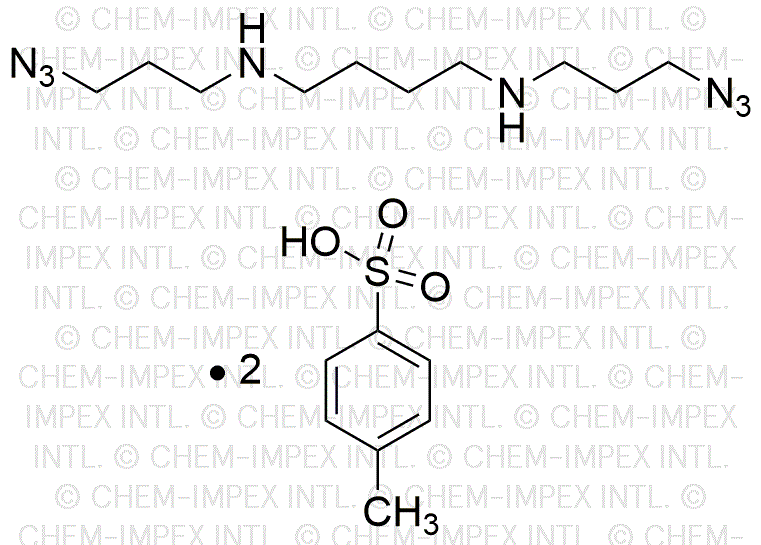Spermine(N3HHN3)·2TsOH is widely utilized in research focused on:
- Biochemical Research: This compound serves as a vital tool in studying cellular processes, particularly in understanding polyamine metabolism and its role in cell growth and differentiation.
- Drug Development: It is employed in the synthesis of novel pharmaceuticals, especially in the development of targeted therapies for cancer, due to its ability to interact with cellular pathways.
- Gene Delivery Systems: Researchers use this compound to enhance the efficiency of gene delivery vectors, improving the transfection rates in gene therapy applications.
- Material Science: The chemical is explored for its potential in creating advanced materials, such as hydrogels, which have applications in drug delivery and tissue engineering.
- Diagnostics: It is also investigated for use in diagnostic assays, where its unique properties can help in the detection of specific biomarkers in clinical samples.
General Information
Properties
Safety and Regulations
Applications
Spermine(N3HHN3)·2TsOH is widely utilized in research focused on:
- Biochemical Research: This compound serves as a vital tool in studying cellular processes, particularly in understanding polyamine metabolism and its role in cell growth and differentiation.
- Drug Development: It is employed in the synthesis of novel pharmaceuticals, especially in the development of targeted therapies for cancer, due to its ability to interact with cellular pathways.
- Gene Delivery Systems: Researchers use this compound to enhance the efficiency of gene delivery vectors, improving the transfection rates in gene therapy applications.
- Material Science: The chemical is explored for its potential in creating advanced materials, such as hydrogels, which have applications in drug delivery and tissue engineering.
- Diagnostics: It is also investigated for use in diagnostic assays, where its unique properties can help in the detection of specific biomarkers in clinical samples.
Documents
Safety Data Sheets (SDS)
The SDS provides comprehensive safety information on handling, storage, and disposal of the product.
Product Specification (PS)
The PS provides a comprehensive breakdown of the product’s properties, including chemical composition, physical state, purity, and storage requirements. It also details acceptable quality ranges and the product's intended applications.
Certificates of Analysis (COA)
Search for Certificates of Analysis (COA) by entering the products Lot Number. Lot and Batch Numbers can be found on a product’s label following the words ‘Lot’ or ‘Batch’.
Numéro de catalogue
Numéro de lot/série
Certificates Of Origin (COO)
This COO confirms the country where the product was manufactured, and also details the materials and components used in it and whether it is derived from natural, synthetic, or other specific sources. This certificate may be required for customs, trade, and regulatory compliance.
Numéro de catalogue
Numéro de lot/série
Safety Data Sheets (SDS)
The SDS provides comprehensive safety information on handling, storage, and disposal of the product.
DownloadProduct Specification (PS)
The PS provides a comprehensive breakdown of the product’s properties, including chemical composition, physical state, purity, and storage requirements. It also details acceptable quality ranges and the product's intended applications.
DownloadCertificates of Analysis (COA)
Search for Certificates of Analysis (COA) by entering the products Lot Number. Lot and Batch Numbers can be found on a product’s label following the words ‘Lot’ or ‘Batch’.
Numéro de catalogue
Numéro de lot/série
Certificates Of Origin (COO)
This COO confirms the country where the product was manufactured, and also details the materials and components used in it and whether it is derived from natural, synthetic, or other specific sources. This certificate may be required for customs, trade, and regulatory compliance.


